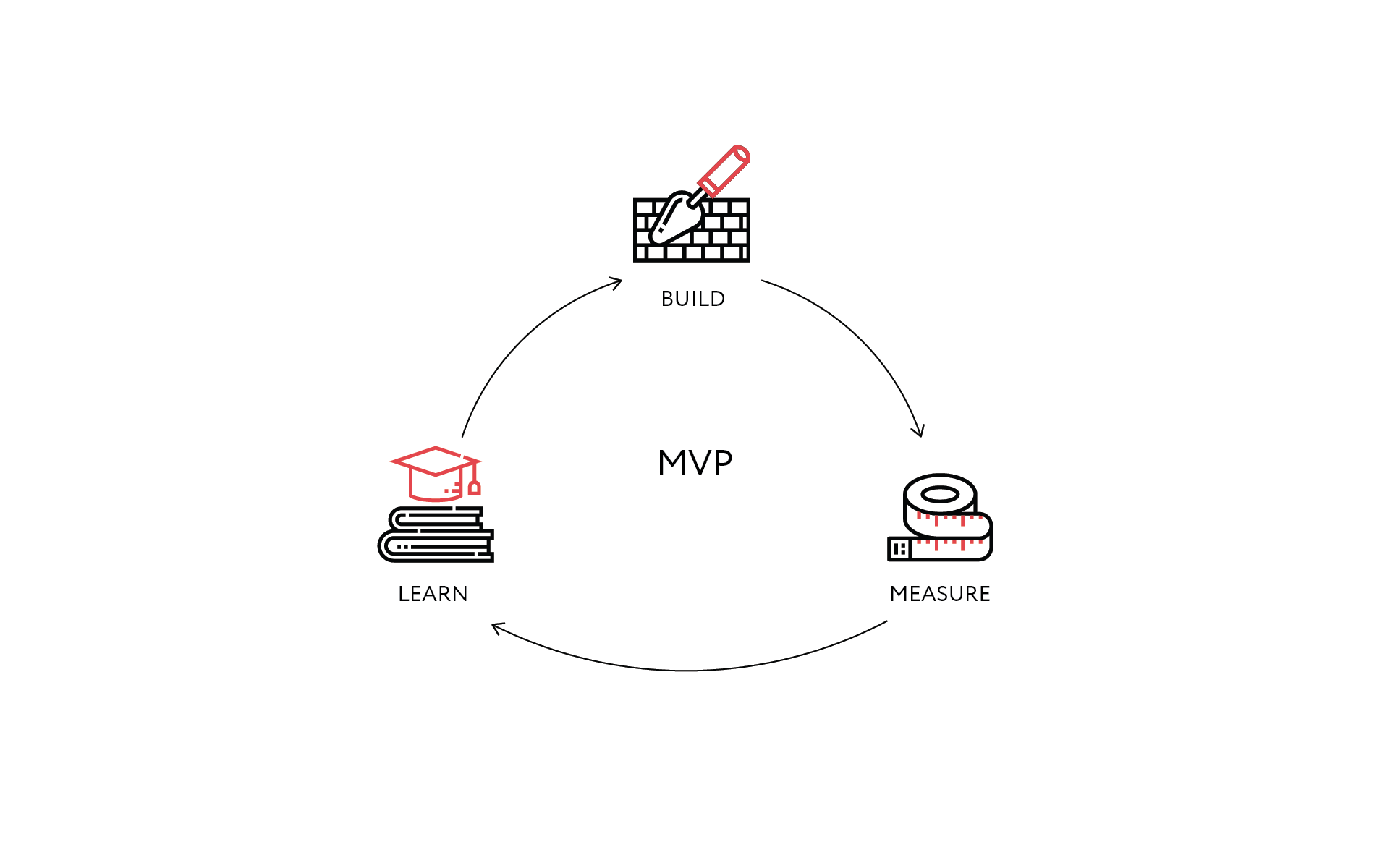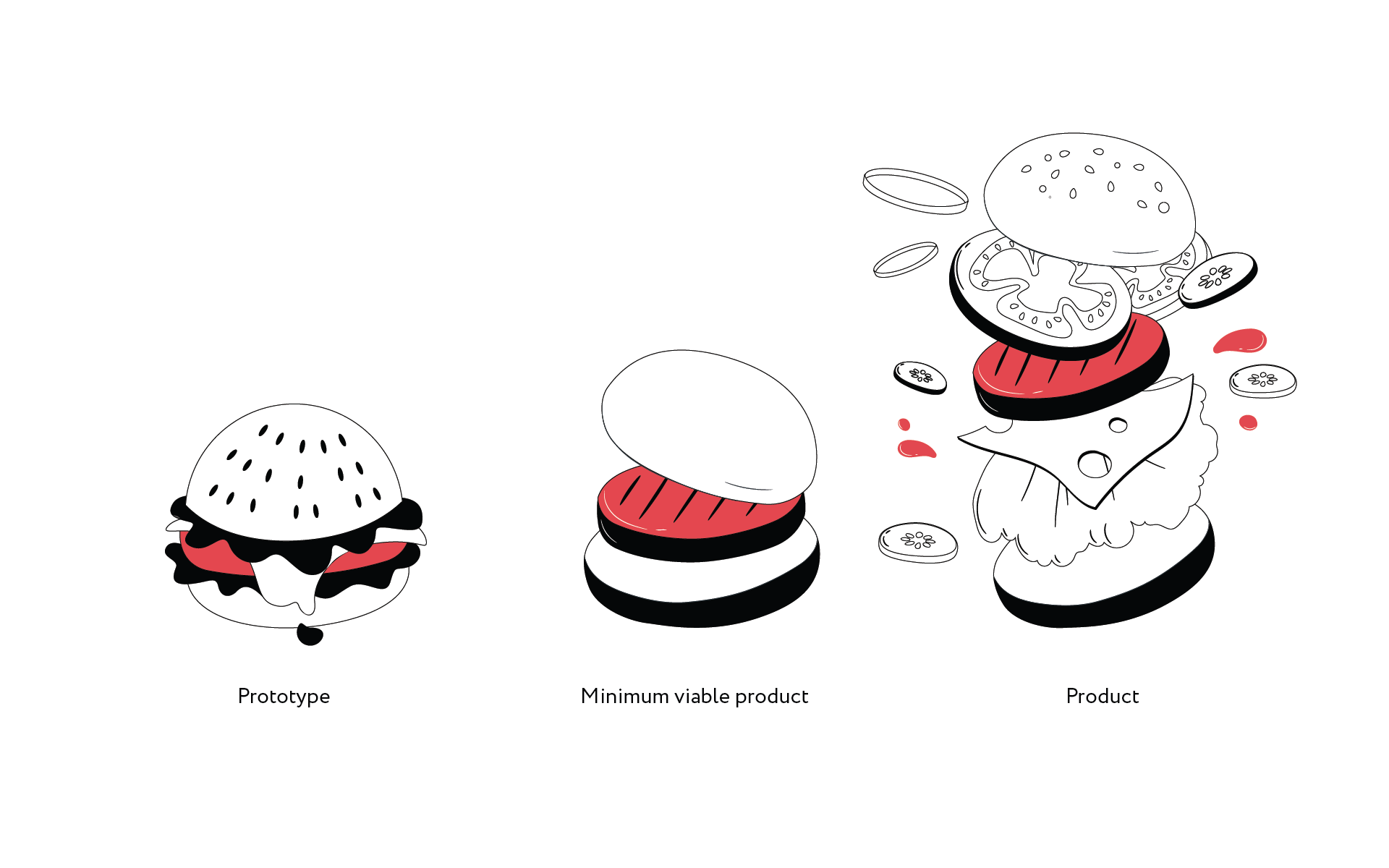 BACK TO ALL
BACK TO ALL

What is MVP?
Everyone knows the definition of the term: the minimum viable version of a product. But few are familiar with the concept — what the product should be, what "minimum viability" means, and when it is time to stop.
Everyone who comes up with the idea of creating a mobile app needs to understand if the idea is successful and competitive in the market. Here is a step-by-step guide to help you understand where to start, move in the right direction, and avoid common mistakes. So, how do you know if the market is ready to pay for your product?
 The term was introduced in 2001 by Frank Robinson and gained traction thanks to Steve Blank and Eric Ries. Eric Ries, founder of the Lean Startup methodology, popularized the technique for creating a baseline version of a product.
"That version of a new product which allows a team to collect the maximum amount of validated learning about customers with the least effort."
The term was introduced in 2001 by Frank Robinson and gained traction thanks to Steve Blank and Eric Ries. Eric Ries, founder of the Lean Startup methodology, popularized the technique for creating a baseline version of a product.
"That version of a new product which allows a team to collect the maximum amount of validated learning about customers with the least effort."
What does minimum viability mean:
Minimal cost MVP is a kind of viability testing of an idea. The main purpose is to add only those features that will be enough for people to use the product and provide feedback, the rest is unnecessary at this stage. It will help you save your budget.
Product ready to use
Make sure the basic features are added. And the customer will be able to use the product for its intended purpose.

Value for your first users The MVP you create should have some value for the first users, so they can give you feedback and also look forward to the next version of the product.
Possibility to get feedback You need to make sure that the first users are excited about your product to give you the feedback you need.
Flexibility After getting initial feedback, you may need to change some fundamental aspects of your product.
Why is an MVP created?
Test the concept in a real market MVP means focusing on the customer, not your business goals. By putting the customer first and figuring out what they really want or don't want, you can painlessly test your idea. The main purpose of the MVP is to understand whether the market is willing to pay for the product or not. It is the perfect way to test your concept in a real market. Once you get user feedback and understand that the idea is in demand, you can scale up and add more features to the product.
Funding Investors don't want to invest in ideas. They prefer to minimize risk and sponsor working products that can be evaluated. That's why an MVP is one of the easiest ways to get funding for your idea.
Avoid introducing unnecessary features The way we see a product and the way the user sees it can be different. The user is focused on solving their problems, while we are focused on business goals. In some cases, features that we think will be good in the product may be useless for users. MVP will help avoid adding unnecessary functionality and thereby wasting the budget.
Business model User’s feedback will show how they use the product, what they lack, what seems unnecessary. You can use this information to build your business model.

Your prototype product design is not an MVP. An MVP is the first version of your real product (with limited features), whereas a prototype is just the first draft of a product that does not yet exist.
What you should ask yourself before starting to develop an MVP
What you should ask yourself before starting to develop an MVP:
What problem are we solving? Every product is created to solve a specific problem. If your product doesn't solve one of the problems, then your idea is not viable.
What is your target market? You need to be clear about who your target audience is and build on that when designing your product.
What are your criteria for success? When we know what success is, we can measure it and understand when we have achieved a goal, and it’s time to stop. Set a long-term, realistic goal without numbers made up.
What is the ultimate goal of the user? The product you create must have value for the user.
How do you create an MVP for a startup?
Let's look at the process of the MVP development and the important steps to consider when launching.

1. Market analysis
In 2021, it's hard to offer people something completely new. Chances are your product will be slightly better/more convenient/affordable for customers than a competing product. That's why you should start with market research. Once you have a clear idea of what you're going to create, you'll have your USP (unique selling point)
2. Clearly formulate your idea
You need to communicate the benefits of your product to your customer for your project to be successful. Focus on the following questions:
- What will your product do for your customers?
- Does your product help solve the customer's problem?
- Why should users buy your product? The answers to these questions can be called a checklist for the success of your project.
3. Define the audience for your product
A broad user funnel is a bad idea. Increase your chances for success - select a specific audience, make the profiles of your users and focus on them in the future, both when creating the MVP and when scaling the project.
4. SWOT-analysis
SWOT-analysis has been used successfully in strategic planning. These are the strengths, weaknesses, opportunities, and risks of your project. The purpose of this analysis is to focus on strengths, identify and minimize weaknesses, avoid risks, and take advantage of existing opportunities for future development. SWOT-analysis helps companies do competitive research and choose a market positioning strategy.
5. User flow
This is the path a user takes when interacting with a product. When mapping the user’s journey, you need to understand what customers want to get when using your product and how they can achieve it.
6. Feature prioritization and MVP scope
The user story method will help you in this planning phase. We talked more about user stories earlier.
7. Choose the most appropriate management and development method
Once you've determined the scope of work, you can begin development. Which approach is comfortable and appropriate for your team is up to you. The main thing to remember is that the development process should be flexible.
8. MVP development
9. Alpha and beta testing
Alpha testing is testing on a sample of users. If the product passes this test, you can move on to beta testing. Don't forget to collect feedback. After analyzing the feedback, you can go back and update the product. There can be as many such cycles as you like - it all depends on the timeframe and the success criteria formulated.
That's it! You have a hard road ahead of you, full of decisions — we wish you success! MVP gives you the ability to predict the commercial and technical potential of the product and make business decisions based on facts, not assumptions. If you have just an idea for a project, we can help you develop the MVP. Sign up for a free consultation with our CEO to learn more.


